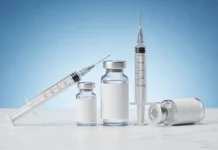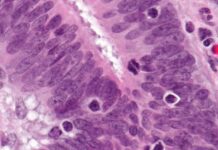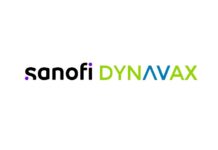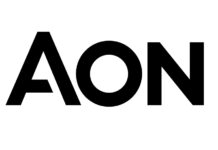Breast cancer remains one of the most prevalent cancers among women globally, affecting millions and reshaping lives. The key to combating this disease lies not only in effective treatments but also in a comprehensive understanding of its risk factors. By diving into the various elements that contribute to breast cancer risk, we can empower ourselves and others to take proactive steps toward prevention and early detection.
Genetic Risk Factors
Genetics play a crucial role in breast cancer susceptibility. Hereditary breast cancer is often linked to mutations in specific genes, primarily BRCA1 and BRCA2. Women who carry mutations in these genes have a significantly higher risk of developing breast cancer in their lifetime—up to 85% in some cases. Additionally, mutations in the TP53 gene, associated with Li-Fraumeni syndrome, also heighten risk.
A family history of breast cancer is another significant risk factor. Women with first-degree relatives (mother, sister, daughter) who have had breast cancer are at a higher risk themselves. Understanding one’s family medical history can provide vital insights into personal risk levels and inform decisions about genetic testing and preventive measures.
Hormonal and Reproductive Factors
The timing of hormonal changes plays a significant role in breast cancer risk. Women who experience menarche (the onset of menstruation) before the age of 12 or menopause after age 55 have prolonged exposure to estrogen. This extended exposure is linked to a higher risk of developing breast cancer.
Childbearing and Breastfeeding
Having children can influence breast cancer risk in complex ways. Women who have their first child before age 30 generally have a lower risk than those who never give birth. Breastfeeding further decreases the risk, with studies suggesting that nursing for at least a year can reduce breast cancer risk by up to 20%. These factors highlight the protective effects of childbirth and breastfeeding against hormone-related cancers.
Hormone Replacement Therapy (HRT)
Hormone Replacement Therapy, often prescribed to alleviate menopausal symptoms, has been associated with increased breast cancer risk. Long-term use of combined estrogen and progestin therapy has been shown to elevate the risk significantly. Women considering HRT should discuss potential risks and benefits with their healthcare provider and explore alternative options for managing menopausal symptoms.
Lifestyle and Environmental Factors
Diet significantly influences breast cancer risk. Research indicates that high-fat diets, particularly those rich in saturated fats, may increase the likelihood of developing breast cancer. Conversely, diets abundant in fruits, vegetables, whole grains, and healthy fats (such as those found in fish and nuts) can have protective effects. Consuming antioxidants and anti-inflammatory foods may also contribute to reduced cancer risk.
Physical Activity
Regular physical activity is another essential factor in lowering breast cancer risk. Engaging in at least 150 minutes of moderate-intensity exercise weekly can help maintain a healthy weight and regulate hormones, both of which are critical in cancer prevention. Exercise also has the added benefit of improving overall health and well-being.
Alcohol and Smoking
Both alcohol consumption and smoking have well-established links to increased breast cancer risk. Studies show that women who consume more than one alcoholic drink per day may see their risk rise significantly. Furthermore, smoking has been implicated in various cancers, including breast cancer, highlighting the importance of a healthy lifestyle.
Biomarkers and Thymidine Kinase (TK1)
What is Thymidine Kinase (TK1)? It is an enzyme that plays a vital role in DNA synthesis and repair. It is essential for cellular proliferation, making it a significant marker in cancer research.
Recent studies have identified TK1 as a potential biomarker for breast cancer. Elevated levels of TK1 in the bloodstream may indicate increased cell division, suggesting the presence of malignancy. Monitoring TK1 levels could provide healthcare professionals with additional tools for assessing cancer risk and disease progression.
Emerging research suggests that measuring TK1 levels can aid in the early detection of breast cancer. High TK1 levels may signal the need for further diagnostic testing. Integrating TK1 analysis into routine screenings could lead to earlier interventions and better patient outcomes, showcasing the promise of personalized medicine in breast cancer care.
Managing and Reducing Breast Cancer Risk
Early detection remains the cornerstone of effective breast cancer treatment. Regular screenings and mammograms can help identify breast cancer at its earliest stages, significantly improving survival rates. Women are generally advised to start annual mammograms at age 40 or earlier if they have a family history of breast cancer.
Making informed lifestyle choices can play a critical role in reducing breast cancer risk. Incorporating a balanced diet, regular physical activity, and limiting alcohol intake are essential strategies. Women should also prioritize maintaining a healthy weight and avoiding smoking to further diminish their risk.
Conclusion
Understanding breast cancer risk factors is crucial for empowering individuals to take charge of their health. By addressing genetic, hormonal, lifestyle, and environmental factors, we can better navigate our personal risks. Furthermore, emerging research on biomarkers like thymidine kinase highlights the importance of continued exploration in the field of cancer detection and treatment. Education and awareness are our strongest allies in the fight against breast cancer, helping us all move toward a future where early detection and effective prevention are within reach for everyone.



















